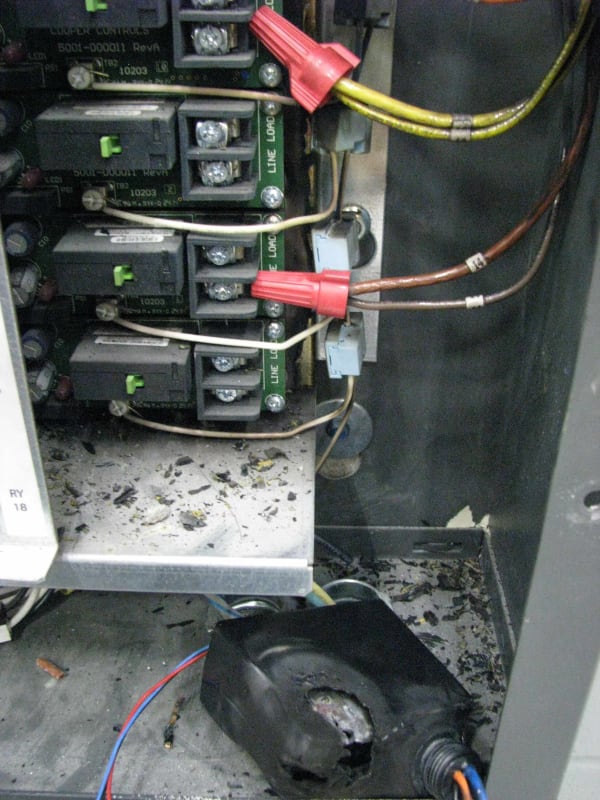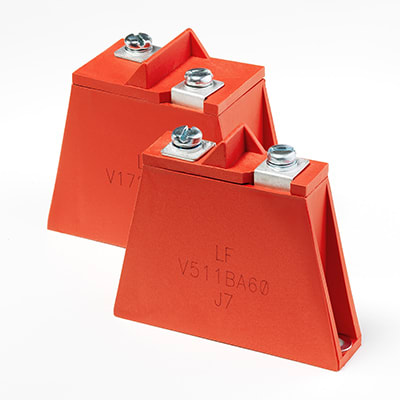Thanks for the pictures, very helpful.
Oh wow. What a mess.
That is exactly what high energy arc destruction looks like with respect to printed circuit wiring boards. Same color I see, same soot patterns. It's what happens when a line-to-line not-bolted arc occurs. It's a dread arc-blast that interestingly tends to blow much larger upstream breakers frequently.
I recently had this happen at a job where a VFD braking resistor was bolted-shorted which connected the VFD's DC bus to ground. The short connected the VFD's rectifier bank from the supply directly to earth which essentially tied all three phases together thru the rectifiers. The VFD rectifier bank completely exploded in a ball of fire that sounded like a grenade going off and it didn't trip the 30A three phase breaking in my hand but did trip the 400A breaker to the building. Similar to your experience with exactly that same soot everywhere.
I believe what's happening in your case is line spikes are violating your lighting gear's voltage rating likely damaging a component, probably a capacitor, and that's resulting in a line to line or line to earth fault. That fault is causing a very high energy arc that's obliterating everything in its vicinity.
You need some form of spike protection ahead of your 'tender' lighting system.
You should also do a survey of your facility looking for anything that could be generating voltage spikes. Things like star-delta motor starters, welders, any large inductive loads. Perhaps large motors. Electromagnets? Large banks of ballasted lamps?
For suppression I'd consider possibly placing a reactor directly in front of this panel and then further placing a power MOV bank between the reactor and the lighting panel. The reactor will protect the MOVs that will protect the panel.
A last possibility is this panel overheating for some reason. Heat causes RAPID capacitor failure and capacitor failures can make this mess.
So;
Survey for spike causing apparatus in your facility. If you find any, deal with them at the location of the problem.
prophylactically add protection in front of your lighting panel.
Keith Cress
kcress -




